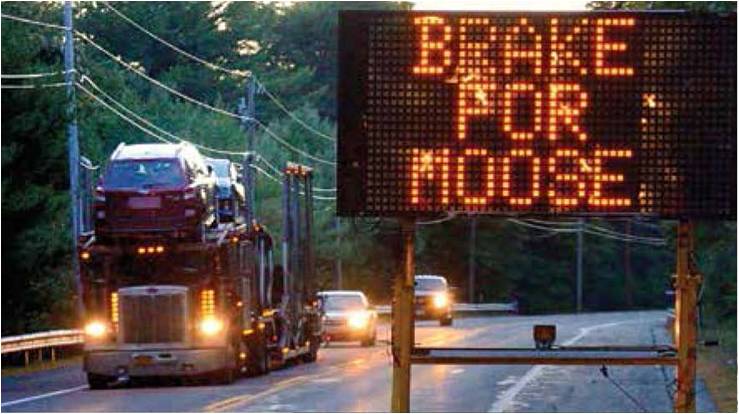Reducing Road Mortality
State and federal transportation agencies, with the help of biologists, are making efforts to reduce the effects of roads on wildlife. Several measures have been and can be implemented to prevent and mitigate the effects of roads on wildlife. Mitigation techniques fall into two categories: techniques that affect motorist behavior (lower speed limits and signs) and those that influence animal behavior (fencing, crossing structures and habitat modification). The function of passage structures is to get animals safely across a roadway, thereby facilitating natural movements and usually reducing road mortality. Habitat modification and fencing can prevent wildlife from getting onto roadways and help to channel wildlife to designated crossing locations. Location of passage structures on the landscape is important, and they are most effective where crossing points in conjunction with high traffic have been identified. The goals of these measures are to reduce wildlife-vehicle collisions and improve public safety. As our knowledge of installing road mitigation measures increases, the viability of affected populations will be enhanced through greater permeability across the landscape.
State and federal transportation agencies, with the help of biologists, are making efforts to reduce the effects of roads on wildlife. Several measures have been and can be implemented to prevent and mitigate the effects of roads on wildlife. Mitigation techniques fall into two categories: techniques that affect motorist behavior (lower speed limits and signs) and those that influence animal behavior (fencing, crossing structures and habitat modification). The function of passage structures is to get animals safely across a roadway, thereby facilitating natural movements and usually reducing road mortality. Habitat modification and fencing can prevent wildlife from getting onto roadways and help to channel wildlife to designated crossing locations. Location of passage structures on the landscape is important, and they are most effective where crossing points in conjunction with high traffic have been identified. The goals of these measures are to reduce wildlife-vehicle collisions and improve public safety. As our knowledge of installing road mitigation measures increases, the viability of affected populations will be enhanced through greater permeability across the landscape.



